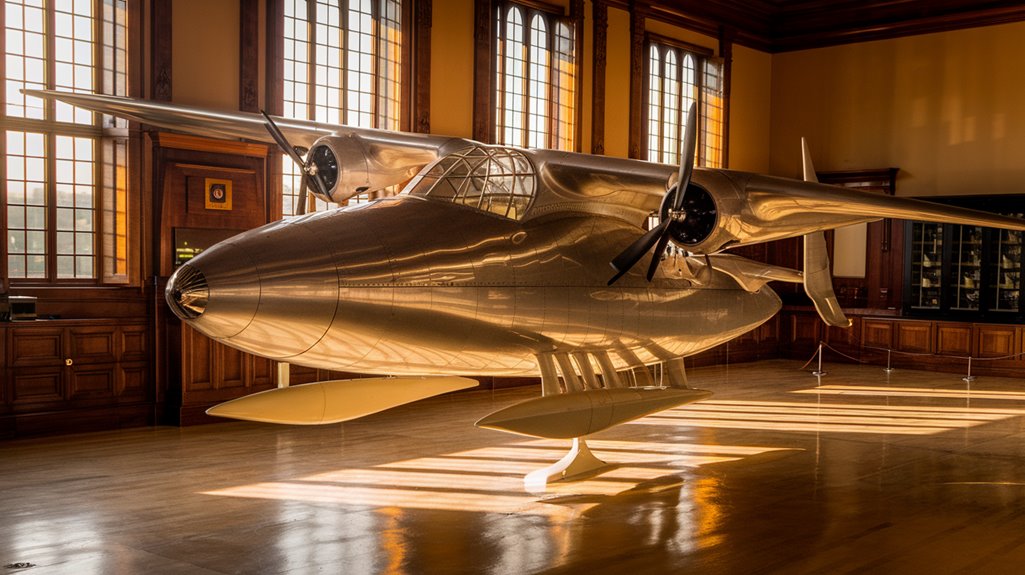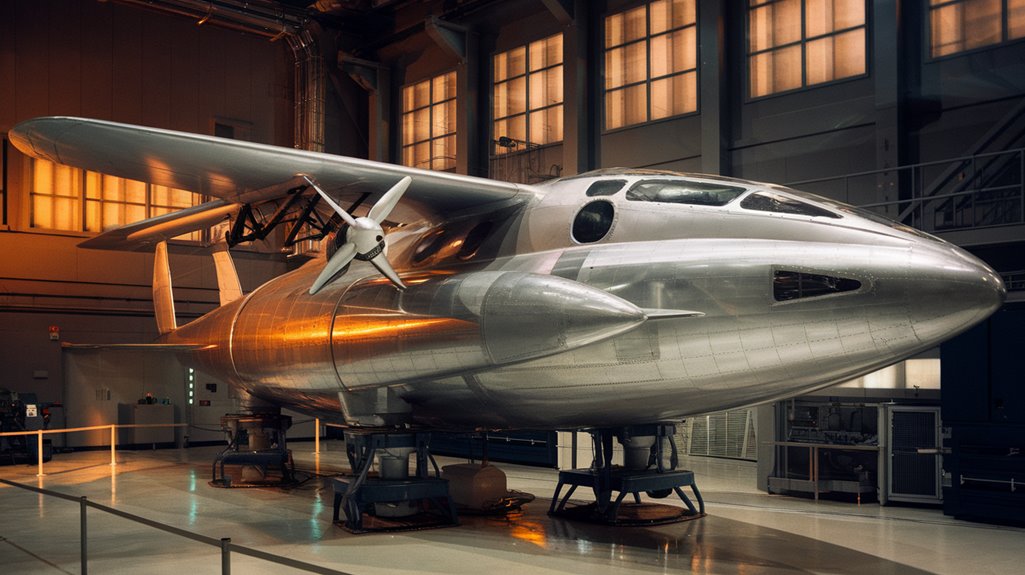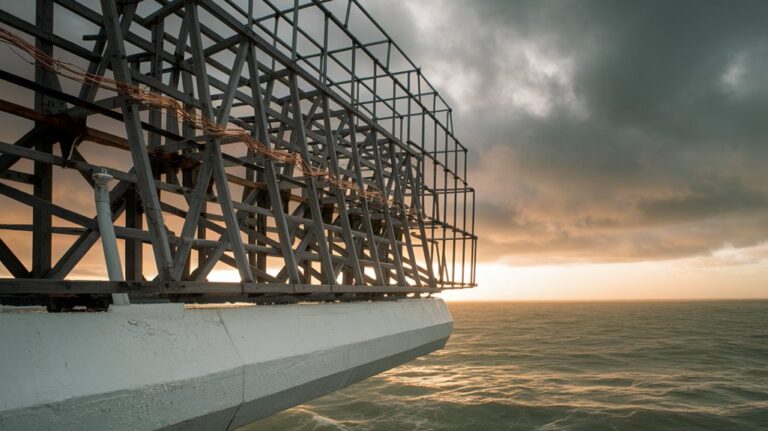Military Fantasies: Yes, They Wanted a Flying Submarine
You've probably heard of some wild military inventions, but a flying submarine might top them all. During World War II, both Soviet and American engineers pursued this ambitious concept, hoping to create the ultimate stealth vehicle. Picture a craft that could dive beneath the waves one moment and soar through clouds the next. While it sounds like something from a spy thriller, the story behind this fascinating military fantasy reveals just how far nations will go to gain tactical advantages.
The Birth of an Ambitious Dream: WW2's Most Daring Concept

While World War II produced countless military innovations, none captured the imagination quite like the flying submarine. You might think this concept came from a science fiction novel, but it was actually the brainchild of Russian engineer Boris Ushakov at the Naval Engineering Institute. His vision merged flying technology with naval warfare in ways never before attempted.
The ambitious design would allow the craft to spot enemy vessels from the air, fly ahead of them at 100 knots, submerge into the water, and launch torpedo attacks. You could even use it to bypass dangerous minefields. Once submerged, the vessel would move at a speed of three knots underwater. U.S. submarines were already proving the effectiveness of underwater warfare, having sunk a massive portion of Japanese merchant shipping.
When it was time to dive, the crew would retreat to a special compartment as the cockpit filled with water. Though the Russian Navy showed interest, the project's complex technical challenges ultimately proved too formidable to overcome.
From Soviet Sketches to American Prototypes
After the Soviet Union's initial conceptual work, the flying submarine evolved from ambitious sketches to actual prototypes in both Russian and American hands.
Soviet designs by Ushakov in 1934 envisioned an electric-powered vessel that could dive to 40m and switch between air and sea operations by pumping water from flooded compartments. The original concept focused on military surveillance capabilities using innovative dual-purpose technology. Ushakov's design featured a manta ray-shaped wing and three powerful AM-34 radial engines.
American innovations took a more practical turn in 1964 with Donald Reid's RFS-1 "Flub," which successfully demonstrated both flight and underwater capabilities, though limited to 12-foot depths.
That same year, Lockheed proposed the ambitious CL-865, designed to cruise at 250mph in the air and reach 18 knots underwater.
While neither concept entered production, they proved the flying submarine wasn't just science fiction – you could actually build one, even if it wasn't particularly effective.
Inside the Flying Submarine: Engineering Marvel or Nightmare
Despite its alluring concept, the flying submarine represents one of engineering's greatest paradoxes.
You'll find remarkable engineering innovations in its design, like the flying-wing body that handles both aerial and underwater stresses, and the ingenious membrane-based fuel tanks that can flood with seawater when submerged.
But you're also looking at severe design limitations: the vehicle must somehow reconcile the opposing needs of lightweight aircraft construction and pressure-resistant submarine architecture. Sound travels much faster in water, making stealth capabilities particularly challenging.
The specifications tell a complex story. The specialized turbofan motors provide propulsion for both flight and surface water movement.
With wingspans reaching 109 feet and weights approaching 39,000 pounds, you're witnessing an ambitious attempt to merge two incompatible worlds.
While it can dive to 98.4 feet and fly 400 miles, these capabilities come at the cost of extraordinary engineering compromises in both domains.
Special Forces and Secret Missions: The Operational Vision
The operational vision for a flying submarine extends far beyond its engineering challenges into the domain of covert military operations.
Drawing from decades of special operations experience, military planners envisioned a vehicle that could revolutionize covert tactics by combining underwater stealth with aerial mobility. Like the failed Operation Eagle Claw, aerial and marine capabilities in one vehicle could have prevented the devastating collision between transport vehicles that doomed the Iran hostage rescue. Similar to Project Azorian, the concept showcased the military's willingness to pursue ambitious technological solutions for sensitive missions.
You'll find the concept aligns with historical secret missions like Operation Gold and Project COLDFEET, where unconventional approaches yielded strategic advantages.
The flying submarine would've enabled:
- Rapid insertion and extraction of special forces without detection
- Multi-domain surveillance capabilities similar to the U-2 spy plane
- Underwater reconnaissance missions with quick aerial escape options
- Covert delivery of supplies to resistance forces, similar to Operation Gladio's objectives
This ambitious concept reflected the military's ongoing pursuit of versatile platforms for classified operations.
Why the Flying Submarine Never Took Off

While military planners dreamed of a revolutionary vehicle that could dominate both air and sea, fundamental technical challenges doomed the flying submarine concept from the start.
Recent analysis demonstrates that focusing on executing good strategies rather than chasing perfect designs could have yielded more practical military innovations.
The vehicle's conflicting design requirements created insurmountable technical limitations. It needed to be lightweight for flight yet strong enough to withstand water pressure, while also incorporating separate propulsion systems for air and sea travel. The mid-20th century interest from multiple nations highlighted the global appeal of this ambitious concept.
Historical failures, from the U.S. Navy's Convair project to Russia's Ushakov design, proved that the concept was more fantasy than feasible.
The Reid Flying Submarine-1 could barely perform in either environment. You'll understand why when you consider the complex shifts between flying and submerging, which left the vehicle vulnerable to detection.
Add in the astronomical costs and crew safety concerns, and you'll see why this ambitious dream never materialized.
Legacy and Future Possibilities in Modern Warfare
Although the flying submarine never materialized as a viable military vehicle, its ambitious vision of multi-domain capability lives on in today's emerging technologies.
Military superiority alone cannot guarantee victory without proper strategic implementation and planning. The rapid development of machine gun technology during WWI demonstrated how quickly military innovations can transform warfare.
You'll see this concept reflected in modern military logistics and future technologies that seamlessly operate across different environments.











